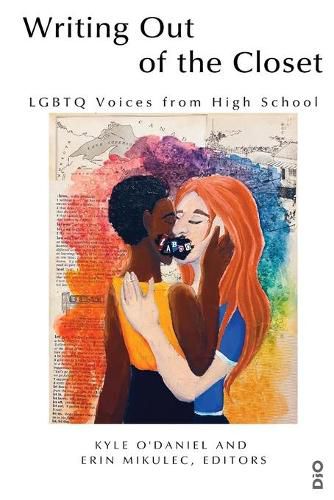Readings Newsletter
Become a Readings Member to make your shopping experience even easier.
Sign in or sign up for free!
You’re not far away from qualifying for FREE standard shipping within Australia
You’ve qualified for FREE standard shipping within Australia
The cart is loading…






This title is printed to order. This book may have been self-published. If so, we cannot guarantee the quality of the content. In the main most books will have gone through the editing process however some may not. We therefore suggest that you be aware of this before ordering this book. If in doubt check either the author or publisher’s details as we are unable to accept any returns unless they are faulty. Please contact us if you have any questions.
Despite some schools offering creative writing classes and literary magazines, LGBTQ youth may not be supported in their efforts to express themselves through writing. For instance, LGBTQ youth may face issues of censorship from teachers and administration, and they may even engage in self-censorship by not submitting their writing to such publications out of fear of rejection or out of a desire to maintain anonymity. As readers, too, these students do not see themselves reflected in books available in their school libraries, as Four of the top ten books on the American Library Association’s Most Challenged List are included due to having LGBTQ characters (Perez, 2019). The dearth of LGBTQ young adult literature is also found in public libraries (Chapman & Birdi, 2016). The message, then, becomes very clear: LGBTQ youth and their stories should remain in the closet. In response to these realities, this collection showcases the works of adolescent LGBTQ writers as they explore ideas of gender, sexuality, and youth through poetry, fiction, and personal narratives. Their work is a poignant reminder for LGBTQ students that there are others like them across the country and around the globe, and that their voices and stories have meaning and value. This collection can also serve as a resource for readers and teachers in high school classrooms and libraries to university courses that examine issues of LGBTQ youth. The pieces presented here demonstrate the power of writing as a both a tool of self-expression and of social advocacy.
$9.00 standard shipping within Australia
FREE standard shipping within Australia for orders over $100.00
Express & International shipping calculated at checkout
This title is printed to order. This book may have been self-published. If so, we cannot guarantee the quality of the content. In the main most books will have gone through the editing process however some may not. We therefore suggest that you be aware of this before ordering this book. If in doubt check either the author or publisher’s details as we are unable to accept any returns unless they are faulty. Please contact us if you have any questions.
Despite some schools offering creative writing classes and literary magazines, LGBTQ youth may not be supported in their efforts to express themselves through writing. For instance, LGBTQ youth may face issues of censorship from teachers and administration, and they may even engage in self-censorship by not submitting their writing to such publications out of fear of rejection or out of a desire to maintain anonymity. As readers, too, these students do not see themselves reflected in books available in their school libraries, as Four of the top ten books on the American Library Association’s Most Challenged List are included due to having LGBTQ characters (Perez, 2019). The dearth of LGBTQ young adult literature is also found in public libraries (Chapman & Birdi, 2016). The message, then, becomes very clear: LGBTQ youth and their stories should remain in the closet. In response to these realities, this collection showcases the works of adolescent LGBTQ writers as they explore ideas of gender, sexuality, and youth through poetry, fiction, and personal narratives. Their work is a poignant reminder for LGBTQ students that there are others like them across the country and around the globe, and that their voices and stories have meaning and value. This collection can also serve as a resource for readers and teachers in high school classrooms and libraries to university courses that examine issues of LGBTQ youth. The pieces presented here demonstrate the power of writing as a both a tool of self-expression and of social advocacy.